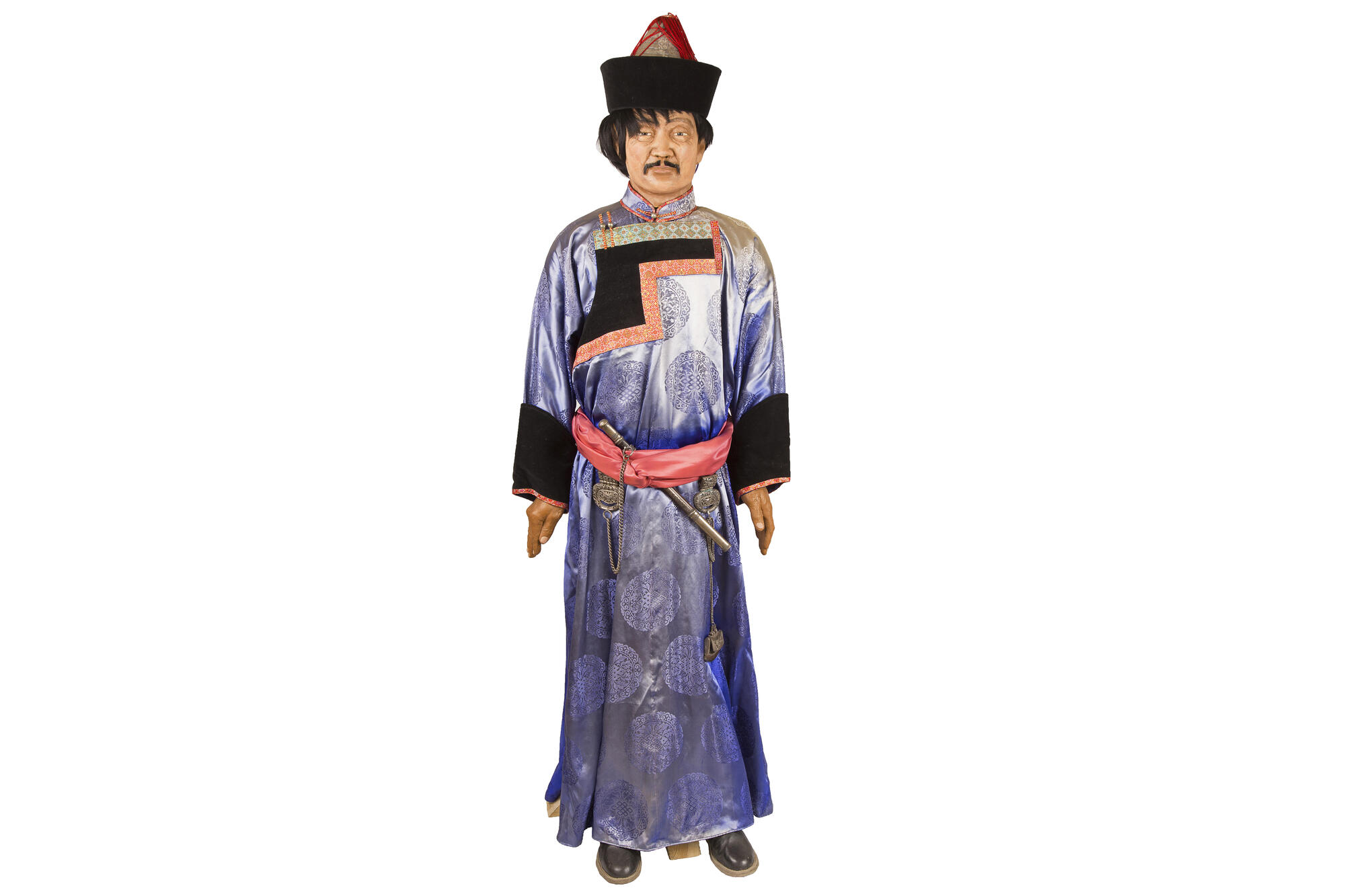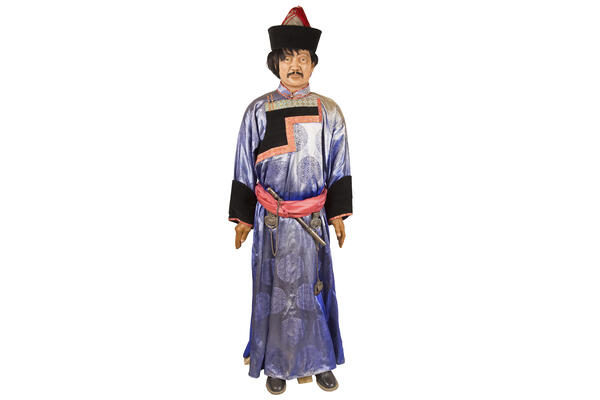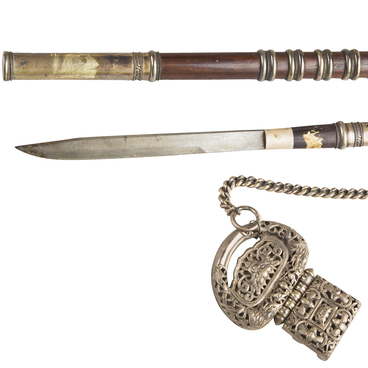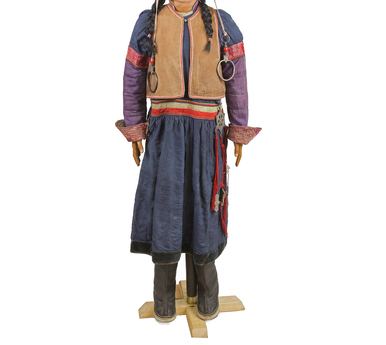A national Buryat men’s costume is displayed in the Museum of Local Lore. It consists of a headdress (malgay), a wide pink belt and a blue robe. The chest part was decorated with an enger — a quadrangular inlay of three colored stripes: red, black and yellow-green. The costume was complemented by a knife in a scabbard and a tinder-box, which was used to start a fire.
The malgay was worn by all men, children and women, regardless of age. It was a conical hat trimmed with velvet or fur. It was decorated with a silver tip and red beads and red silk tassels. By the décor of the malgay, it possible to determine where the owner came from and to which clan they belonged.
Traditional Buryat clothing items were practical, comfortable and easy to make. Depending on the season and wealth, the Buryats used fur, wool, leather, silk, brocade, velvet, cloth and cotton fabrics.
In the east and west of the region, costumes differed in silhouette, cut, materials, texture, sewing method and decorations. The difference in clothing was influenced by the mythological beliefs of the tribes about the world.
For example, the cult of the sky was prevalent among the Eastern Buryats. That is why the main color of their costume was dark blue, while some elements were red, white and black. The clothes were decorated with an enger and a belt.
The West Asian Buryats worshipped the Sun. For their costumes, they used materials of brown and yellow shades: smoked fur, sheepskin, kamus — skin from the foreleg of a deer or elk. Ornaments and plaques were made in the form of gold or silver circle, sometimes with coral beads. The decorative elements were covered with floral ornaments or images of birds.
The colors in the Buryat costume had a sacred meaning. Yellow, especially deep, rich golden yellow was the color of harvest, ripe grain, material and spiritual wealth. Its symbolism was borrowed from Buddhism. Black was associated with the ground, home and homeland. Red was the color of fire and vital energy, and blue represented clear, eternally blue sky.
The malgay was worn by all men, children and women, regardless of age. It was a conical hat trimmed with velvet or fur. It was decorated with a silver tip and red beads and red silk tassels. By the décor of the malgay, it possible to determine where the owner came from and to which clan they belonged.
Traditional Buryat clothing items were practical, comfortable and easy to make. Depending on the season and wealth, the Buryats used fur, wool, leather, silk, brocade, velvet, cloth and cotton fabrics.
In the east and west of the region, costumes differed in silhouette, cut, materials, texture, sewing method and decorations. The difference in clothing was influenced by the mythological beliefs of the tribes about the world.
For example, the cult of the sky was prevalent among the Eastern Buryats. That is why the main color of their costume was dark blue, while some elements were red, white and black. The clothes were decorated with an enger and a belt.
The West Asian Buryats worshipped the Sun. For their costumes, they used materials of brown and yellow shades: smoked fur, sheepskin, kamus — skin from the foreleg of a deer or elk. Ornaments and plaques were made in the form of gold or silver circle, sometimes with coral beads. The decorative elements were covered with floral ornaments or images of birds.
The colors in the Buryat costume had a sacred meaning. Yellow, especially deep, rich golden yellow was the color of harvest, ripe grain, material and spiritual wealth. Its symbolism was borrowed from Buddhism. Black was associated with the ground, home and homeland. Red was the color of fire and vital energy, and blue represented clear, eternally blue sky.



